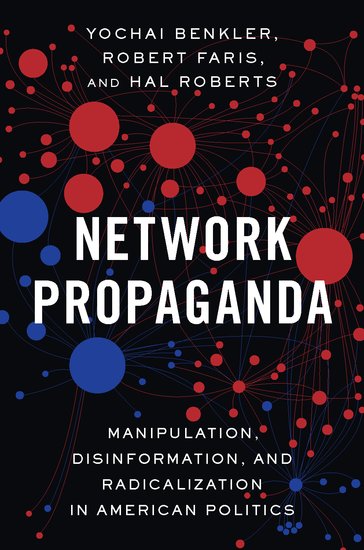What do you think?
Rate this book


472 pages, Paperback
First published October 15, 2018
[Imported automatically from my blog. Some formatting there may not have translated here.]
Not sure why I got this from the University Near Here Library. Maybe some recommendation I read somewhere a few months back? Anyway, it's outside my usual non-fiction diet, which slants libertarian/conservative. Probably a good thing.
Consumer note: you can by the book at Amazon via the link at your right (as I type: $88.18 hardcover, $25.16 paperback, $11.11 Kindle) or you can apparently read the whole darn thing for free here.
The authors contend that, thanks to the Internet and its participants, we are in an "epistemic crisis", where voters are going to the polls "knowing" things that just aren't so. They blame primarily the right-wing media for pushing stories that are based on rumor and innuendo. Their primary examples: Pizzagate, the Seth Rich murder, Uranium One. (On the other hand, they're relatively dismissive of Russian influences via their Facebook ad buys.)
Their claims are based on exhaustive analysis of linking behaviors on Facebook and Twitter. They assign a central importance to Breitbart, Infowars, Gateway Pundit, and Zero Hedge, which (they say) played a major role at pushing fake news out to their readers. On the broadcast side, Fox News is claimed to be guilty of similar bad behavior.
Oh yes, there are also lefty sites. But (it's claimed) they aren't as bad. The attitudes toward truth are linked up with the standard "journalistic norms" exhibited by the respectable news outlets: the New York Times, the Washington Post, ABC, NBC, CBS, … basically anything not called "Fox News". Hence the information consumed by American left and right wings is "asymmetrical", with the right far more likely to believe delusional stuff.
And Politifact is not biased.
This goes on to influence their recommendations for reform: since the "problem" is on the right, the proposed solutions are predictably skewed too. Their only criticism of what we right-wing loons call the Mainstream Media: ah, they take that whole this-side-said/that-side-said model of fairness as flawed: How can that be fair when the right side lies all the time?
Obviously, I had a number of problems with the book's analyses. In no particular order:
Not that it matters, but this came up in my feed today from the Daily Wire: Reuters Admits They Sat On Bombshell Beto O'Rourke Story For 2 Years. This true story about O'Rourke's hacktivist past could have negatively impacted his chances in his race against Ted Cruz. Violation of journalistic norms? I'm afraid the authors of Network Propaganda would consider it, at best an aberration.Unfortunately, this is just today's example. The authors turn a deaf ear to what by now is substantive conservative/libertarian criticism of the MSM.
Which (in turn) means that they don't really understand the evolution of right-wing sites, many if not most of which were formed to fill a niche in the media ecosystem in response to MSM failings. "Asymmetry" shouldn't be surprising—it's exactly what you'd expect from essentially dissident media, voices that exist specifically in reaction and opposition to the dominant narrative. Since we are all human beings suffering under the same cognitive biases, it would be surprising if the right wing was uniquely under the spell of fakery. You don't have to have a very long memory to recall the heyday of 9/11 Trutherism, in which a good-sized fraction of the populace were led to believe the WTC buildings were brought down by explosives secretly planted in the two buildings and/or that the government knew about the attacks ahead of time and consciously decided to let them happen.There are also the JFK assassination conspiracy theories: he wasn't shot by a Russia/Cuba-loving commie, but a shadowy cabal of right-wing plotters. (One variety of the theories even got a movie devoted to it, gathering eight Oscar nominations.)
And also unconsidered is the oeuvre of Michael Moore, at least as truth-challenged as anything at Breitbart, but much more "respectable".
The authors ignore this sort of lefty propaganda, with the implied excuse that it's conveniently outside the time window they concentrated on. I think the resulting "asymmetry" in their analysis is the book's biggest flaw.
I'm probably biased and maybe unrepresentative, but my personal experience with right-wing media differs strongly from what the authors picture. I had given up on Breitbart by early 2016. I don't watch Fox News much, never got into any of the wackiness at Infowars or Gateway Pundit. Zero Hedge was not a habit either (but it seems OK to me).The authors claim that their analysis shows that these sites are uniquely influential on the right. Uh, fine, but I'm not convinced.
There are other quibbles, but I've babbled long enough. Anyway, feel free to check it out for yourself. I feel virtuous for being "outside the bubble", having looked at a book that I disagree with so strongly.